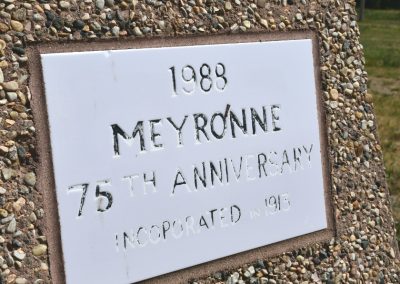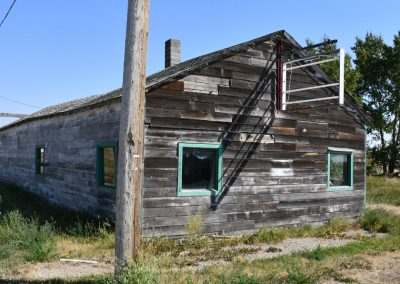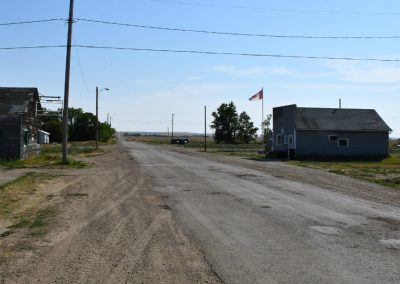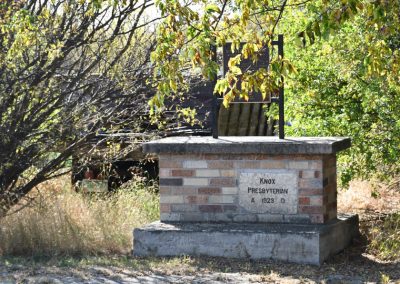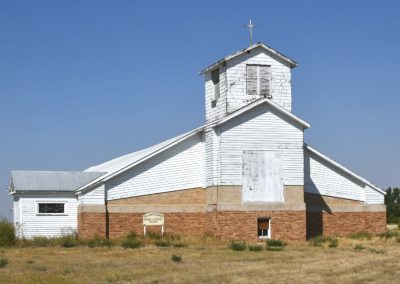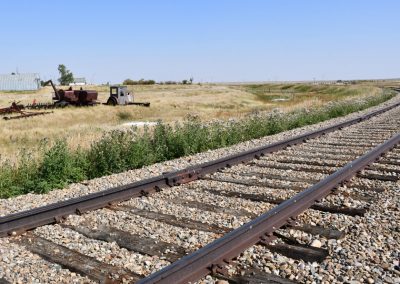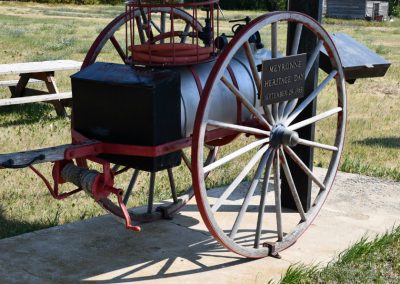Fighting the inevitable
For Watts, the book isn’t just a connection to her old home, but to her family as well. One of the authors of the 95-page history was Watts’ mother, Helen Day. She and another member of the community, Elizabeth Little, wrote the book together in 1967 as a Canada centennial project.
The book isn’t long, but it contains intimate details about the origins of Meyronne. According to co-authors Day (Watts’ mother) and Little, the area was not opened to settlers until 1908. And when it first came into being, the town “served a large area, both to the south and north.”
The first blacksmith? His name was Ferris Lawrence. The candy store was owned by Sam Hobinson and his wife. The old area newspaper, the “Meyronne Independent,” was printed by R.E. Johnson. The railway arrived in 1913.
In 1967, when the book was written, approximately 180 people lived in the town. Only a handful are left.
The town is much smaller than it once was. The 2016 census puts the population at 35 people, but that includes nearby farmers who still call Meyronne their home. Farming isn’t the same as it was when homesteaders began building the town up more than 100 years ago, but the history contained in “Meyronne Memories” still defines the purpose of those who came first.
“I think this whole thing was good,” Watts said. “Not just for myself but maybe for my children as well to know that… this was a thriving community, at one time.”
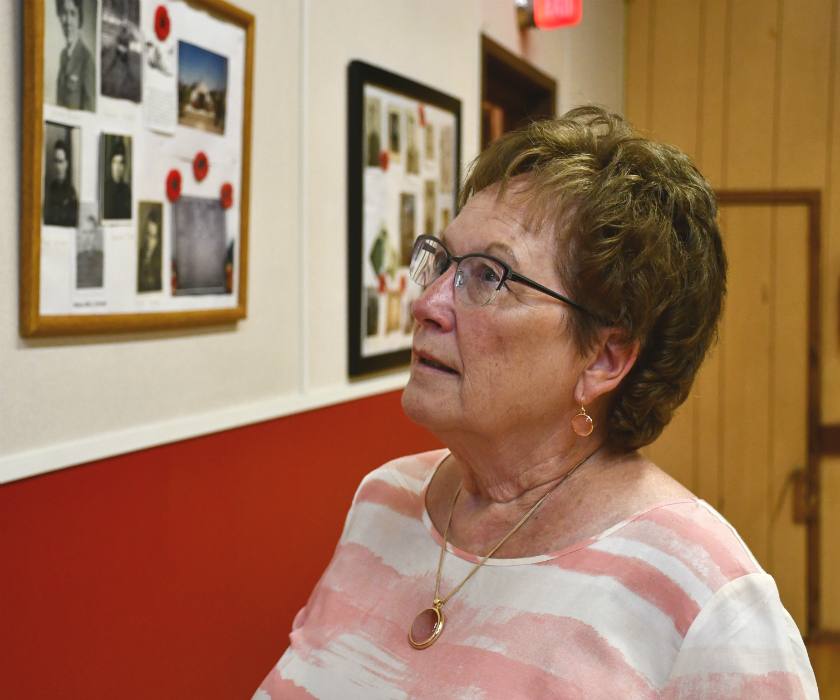
The farmer’s life
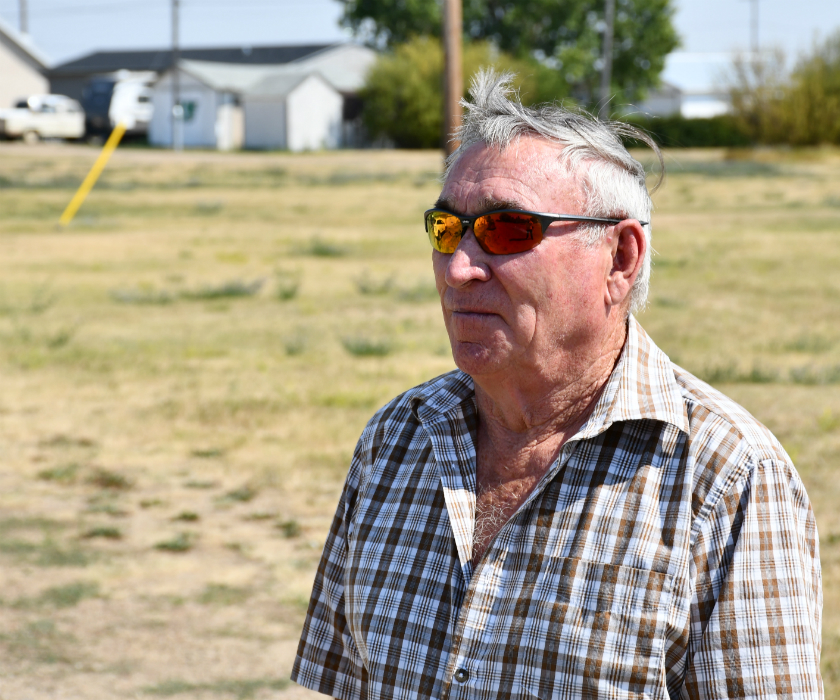
Glen Wright was born and raised in Meyronne. For 80 years he’s called the town home, and he’s seen the town rise and fall. Calling it a “mixed farming community” of both cattle and crops, Wright said the town has been slowing down since the 1930s.
“In the 20s, there was a family (that) lived on every quarter of land in the south here,” Wright said.
Wright’s name is noted in “Meyronne Memories” as the man who helped sell water door-to-door, since “a good well seems hard to find.”
“It was very easy land to work… but they didn’t know it would blow away,” Wright said. “Pretty well everybody had to move out.”
Meyronne’s decline might have begun way back in the 30s, but it’s farming today that has driven a stake into its heart. Both Wright and Watts said that farming has become much more efficient – too efficient.
“Bigger farms, less people,” Wright said. “And I’m not sure it’s for the best.”
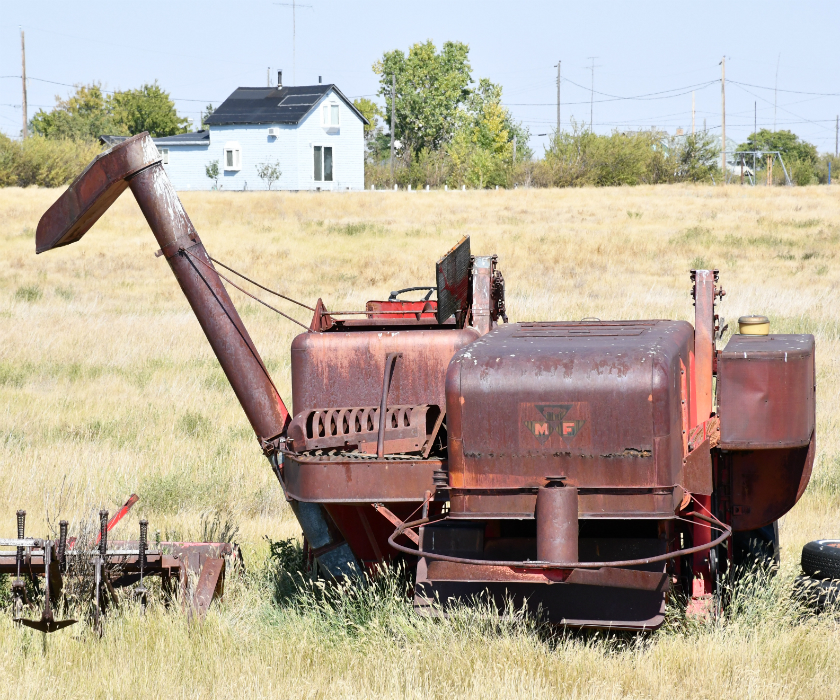
Abandoned farm equipment on the outskirts of Meyronne. Photo by Matthew Olson.
This trend is evident in the Statistics Canada 2016 Census of Agriculture. It shows the number of farm operations dropped to 34,523, the lowest it’s ever been. But the average farm size increased to 1,784 acres, the largest it’s ever been. And the amount of cropland rose to 40.5 million acres, the biggest it’s ever been.
And according to recent reports from Statistics Canada, the total amount of useable cropland has increased steadily since the 1970s even as the number of farm operations has dropped. The largest farming sector in the country is still field crop like wheat and canola, and Saskatchewan accounts for almost 47 per cent of Canada’s entire field crop area.
Having fewer farmers “is part of a longer trend occurring here in the province since the early 40s,” he said. “We have our ups and downs, but the industry is doing well.”
Greuel also said the waning rural population is not considered a problem from the Ministry of Agriculture’s point of view, and he chalks up the shrinking number of farm operations and increasing size of farms to economic progress.
“The industry is becoming more competitive,” he said. “Higher productivity per acre, higher productivity per unit of labour … I would say that’s part of the economic reality.”
The machinery is one main reason less farmers are required, Wright said. He also said it’s what makes getting into the farming industry prohibitive for prospective planters.
“Today the numbers are so huge and so out of whack,” Wright said. “When I was farming you could buy a new tractor … for $5,000. Today, it’s $500,000.”
Regardless of how it happened, Wright said he believes what’s left of Meyronne is fated to fade into the fields like so many other nearby towns.
“But there was a town there at one time. Eventually, this’ll come to the same thing.”
Alive in their memory
As Watts ambles slowly down the only paved road in Meyronne, she points out more from her childhood memories. There were two stores near the south end of town. Across the way from them, the old hotel. Down the street to the west, the school.
None of them are left standing. Meyronne’s Main Street is silent, save for the wind rushing through from the wide prairie expanse visible even from the heart of the village.
It’s a far cry from the pictures on the walls in the town hall, or the stories told in the book written more than 50 years ago.
According to a report from the Strengthening Rural Canada initiative, the number of young people living in rural areas is declining. The number of people age 19 and under dropped by nine per cent between 2001 and 2011. On the other side, the number of people from 45 to 64 – the largest age group in rural Saskatchewan – increased by 22 per cent during that same time.
“The young people can’t stay here because there’s nothing for them.“
When asked what Saskatchewan would lose as towns like Meyronne vanish from the landscape, Brisebois had a quick answer.
“There’s a heritage … people were proud to build stuff, get things to be remembered by,” Brisebois said.
But Brisebois also said he would be one of the last with a bond to the town. There’s not many left who share it.
“Our generation… is the last generation. Everyone before us is gone,” he said.
“Our generation is the last generation. Everyone before us is gone.”
In “Meyronne Memories,” the introduction says the town was built thanks to “the brave men and courageous women who came here when the country was new and made of this vast unbroken prairie what it is today.”
“It’s very sad to see all the town like this,” Watts says, wiping tears from her cheeks. “But I guess it was inevitable that it would happen.”

